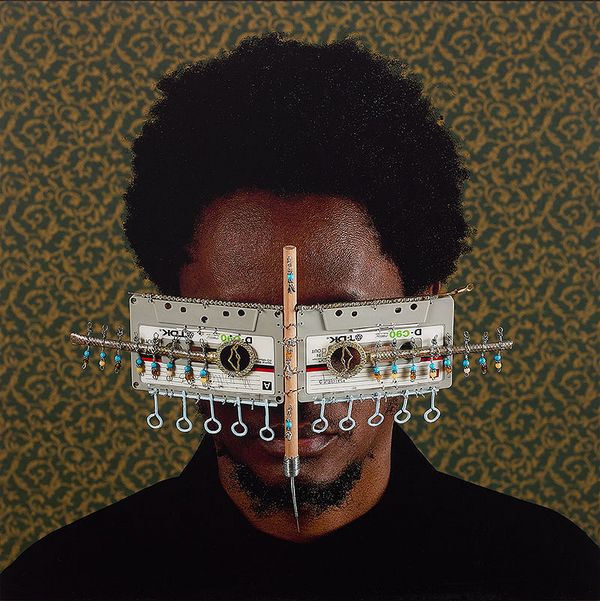Cyrus Kabiru, Masada, 2019. New Now London.
Since its founding in 2017, Africa First has been part of a vibrant and dynamic moment in the global recognition and promotion of African and diasporic art. As well as supporting the work and international reach of established artists through its collection and well-established lending program, the Africa First Residency program is part of a swelling movement aimed at improving and expanding the infrastructure for emerging talent through the provision of studio space, creation of new museums, galleries, art fairs, and arts programs. Based in Israel, the residency offers artists the unique opportunity to explore the country and to create works that respond to their experience during their stay. The artists represented in the present group have themselves experienced the direct impact of similar well-established and important programs, and in their commitment to building and maintaining a dialogue around social change have vocalized the fundamental importance of such initiatives in the global reception of contemporary African art. Ahead of the New Now London Sale on 28 April, with proceeds to benefit the Africa First Residency Acquisitions Fund and Residency Program, founder Serge Tiroche speaks with Phillips about some of the most exciting artists working today.
PHILLIPS: In the collection currently being presented for sale we can see a group of works that engage with a range of different traditions encompassing portraiture, craft and narrative storytelling. What are you looking for as a collector, and are there any common trends among these artists?
SERGE TIROCHE: The collection is about nurturing excellence in whatever form it takes. It’s not about a specific theme, medium, age group or any other limiting factor. There are many common narratives because the artists are practicing simultaneously and deal with the issues of our time – be they political, social or ecological. If there is a common thread it is that in my eyes all the artists in the collection have an innate talent and a fully developed personal vocabulary. They are generally young, ambitious, connected and endlessly creative.
P: How do you see the residency fitting into the landscape of contemporary African and diaspora art? How important are opportunities like this for young, emerging artists?
ST: I think our residency, and the growing availability of residencies in general, is essential for exploration and inspiration and part of the today’s globally oriented process to personal growth as a professional artist. In some instances, the Africa First residency resulted in the first international travel opportunity for African artists and their families, and quite incredibly, a first time visiting an international museum. Such moments are immensely valuable to artists making their first steps in the art world. Meeting fellow artists, curators and collectors, and getting to know a new culture occasionally mark a turning point in the visiting artist’s practice. Furthermore, I am fortunate to have a network of collaborating institutions in Israel, so the residency often leads to further exhibitions and publications.
P: What plans do you have for the residency going forward?
ST: In 2022 Africa First is commencing a new series of exhibitions for emerging African artists in Israel, in collaboration with leading galleries and non-profit institutions. We will resume the international residency program with two artists expected to arrive in May and June, as well as expanding the facilities and exhibition opportunities via local partnerships with various institutions and commercial galleries. We are proud of our graduate artists, many of whom saw their careers evolve quite rapidly since their visit. Africa First has also provided financial support to international exhibitions, publications, and prizes, and has donated works produced during the residency to major international museums. Further, Africa First will co-produce an important series of short videos with Art Africa and Africa Power Station – as well as a full length documentary – on Africa’s presence in Venice.
The Artists of Africa First
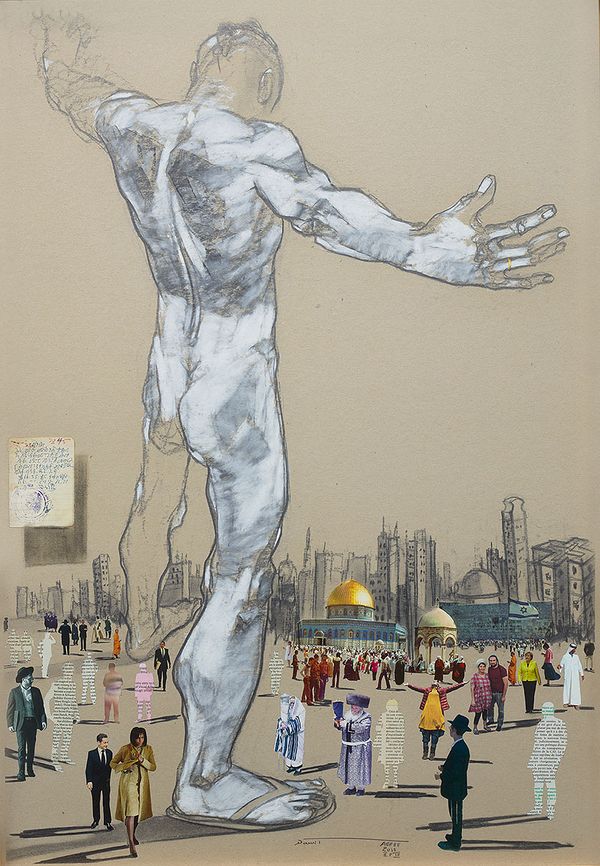
Dawit Abebe, Existence 4, 2018. New Now London.
Dawit Abebe
Dawit Abebe (b. 1978) graduated from the Alle School of Fine Art and Design at Addis Ababa University with a diploma in painting, sculpture, graphics, photography, and industrial design. In 2001, he founded the Habesha Art Studio in his native Ethiopia, where he continues to be a full-time artist-in-residence. In addition to numerous successful international exhibitions across Africa, Europe, and the Middle East, Abebe has also worked with charities such as UNICEF to hold workshops for street children in Arba Minch, Jinka and Addis Ababa. Abebe has been the focus of notable solo exhibitions, including “Quo Vadis?” at Kristin Hjellegjerde Gallery, London, in 2017, Background 2 at Kristin Hjellegjerde Gallery, London, in 2015, Background 1 at Lela Gallery, Addis Ababa, in 2014, and the 2012 X Privacy at the Alliance Ethio-Française, Addis Ababa.
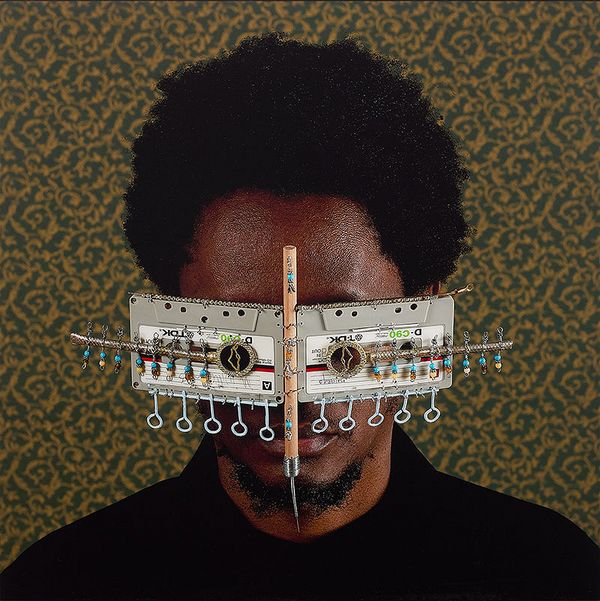
Cyrus Kabiru, Masada, 2019. New Now London.
Cyrus Kabiru
While participating in the 2019 Africa First Residency program, Cyrus Kabiru (b. 1984) was captivated by the story of Masada and the beauty of the desert location. Kabiru then gathered materials from the Jaffa Flea Market to create a work inspired by this trip. The C-Stunner is composed of a cassette tape, bracelets, and necklaces representing his moving experience. At the center is a bead which is a map of Israel as if Kabiru is looking through the country’s lens. Kaibru has exhibited extensively, both internationally and on the African continent, and in 2019 was selected as one of Quartz’s Africa Innovators for 2016 in Nairobi, Kenya.

Terrence Musekiwa, Foreign Spirits #1, 2016. New Now London.
Terrence Musekiwa
Born into a family of stone sculptors, Terrence Musekiwa (b. 1990) began carving at the age of five through watching his father wield his chaise and hammer. With unique confidence and skill, Musekiwa tears down the conceptual wall between traditional carving and contemporary art. His work begins with traditional stone carving methods, but it is brought to the fore of contemporary Zimbabwe with its pungent and satirical commentary, focusing on religion, history, tradition, and daily turmoil. Embedded within the stone are multifaceted conversations and struggles. His use of chains, glass, wood, cloth, plastic, and resin is intended as much to challenge tradition as it is to confront aesthetic and ideological preconceptions. Recently, Musekiwa was selected as one of four artists to represent Zimbabwe at the 59th International Exhibition of La Biennale di Venezia, opening in April 2022.
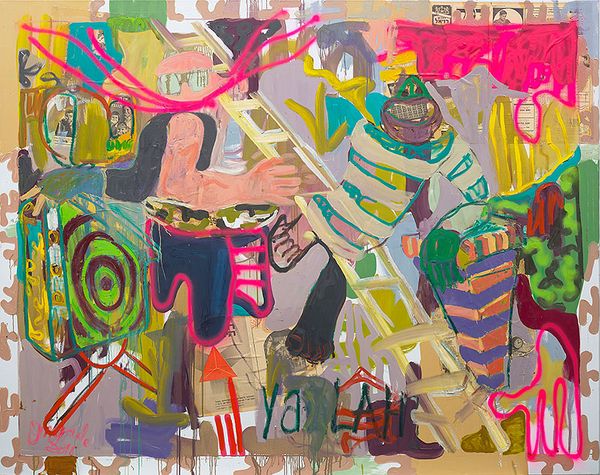
Gresham Tapiwa Nyaude, Bearing Gifts, 2018. New Now London.
Gresham Tapiwa Nyaude
Born and raised in Mbare, Harare, Zimbabwe, Gresham Tapiwa Nyaude (b. 1988) works against the sweeping identity that has defined his environment by the voice of the state. His images oscillate between figuration, abstraction and hallucination, drawing from the restless energy of Zimbabwe’s most vibrant and notorious ghetto. Living on the verge between survival and demise, his figures defy characterization, underscored by the humanity of their quest to attain a quality of life that appears even beyond the reach of dreams.
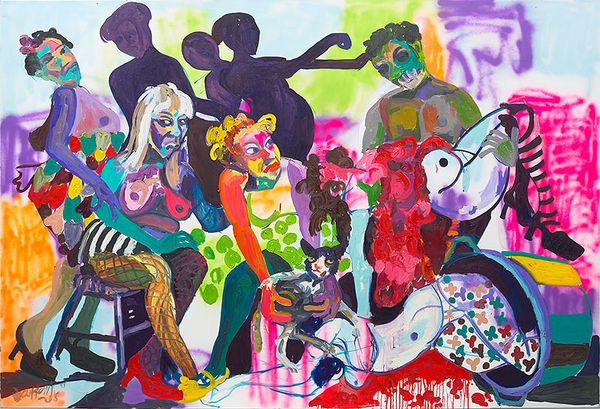
Wycliffe Mundopa, He Who Casts the First Stone Part 2, 2018. New Now London.
Wycliffe Mundopa
Wycliffe Mundopa (b. 1987) lives and works in Harare, Zimbabwe. A committed painter of the lives of women and children in the capital’s underprivileged neighborhoods, his works speak out with passion at anger, cynicism, and compassion, acknowledging those too often swept under the carpet by society with a relentless commitment. His work showcases how painfully and vibrantly women’s lives reflect the conflicts of tradition and change of life in contemporary life in Zimbabwe. The artist presents people without adornment or judgment – the mothers, the prostitutes, the caregivers, the breadwinners, the beautiful and the ugly, the selfish and the greedy.
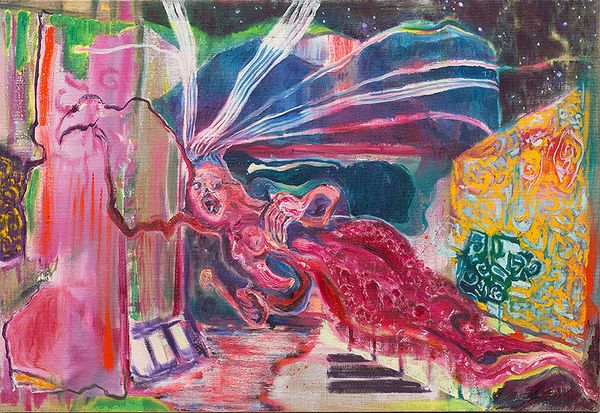
Helen Teede, Come to my Private Show, 2018. New Now London.
Helen Teede
Zimbabwean artist Helene Teede (b. 1989) currently resides between Venice and Harare, the city where she was raised. Her practice is influenced by the relationship between power and writing, and the historical trajectory therein. Her work is an exploration of the ways in which the earth's surface can be read, and how we determine our position as a species that marks the world in impactful ways.

Robel Temesgen, Two works: (i) Tale of Jebenas 5 (ii) Tale of Jebenas 4, 2018. New Now London.
Robel Temesgen
Ethiopian artist Robel Temesgen (b. 1987) received an MFA from Tromsø Academy of Contemporary Art, University of Tromsø, Norway, in 2015, and a BFA in Fine Art (Painting) from Addis Ababa University in 2010. Temesgen's paintings and works on paper depict water, land, and air in various states of fusion and transformation; ethereal landscapes inspired by the longstanding Ethiopian belief of adbar and its associated rituals. In Amharic, the term adbar refers to the embodiment of protective spirits within various elements of the natural landscape, such as lakes, mountains, rocks, or trees. Temesgen’s work has been exhibited widely, including at the Fendika Cultural Centre in 2018, the Hamburger Bahnhof, Berlin, the Marabohparken, Stockholm, in 2017, and the Akademie der Künste, Berlin, in 2016.
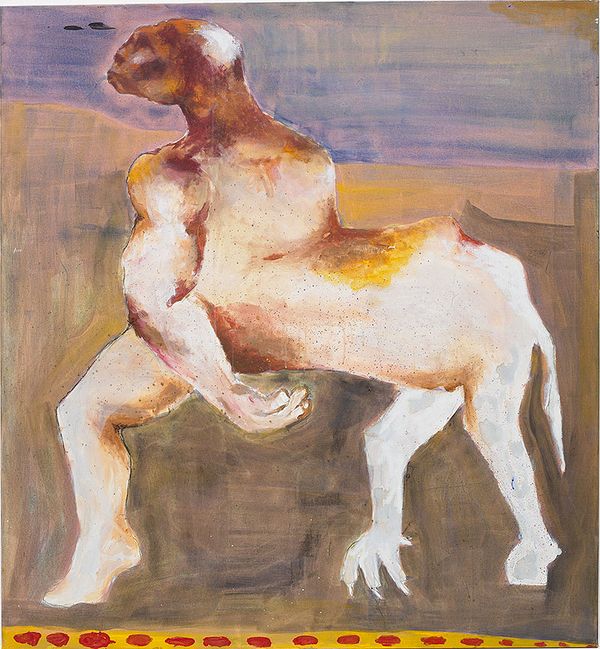
Sadikou Oukpedjo, Untitled, 2018. New Now London.
Sadikou Oukpedjo
A primordial separation of man from the animal being with which it was once whole informs the approach of Sadikou Oukpedjo (b. 1975), whose work frames this cleaving as the source of conflict in the human world, rather than its liberation from a lesser state. Oscillating between strange and familiar, the artist’s figures call upon mythological foundations and surreal forms and draw attention to the consequences of this separation. “Like the animal that eats its placenta,” Oukpedjo notes, “man feeds on his first form in the world by erasing traces of his animality.”
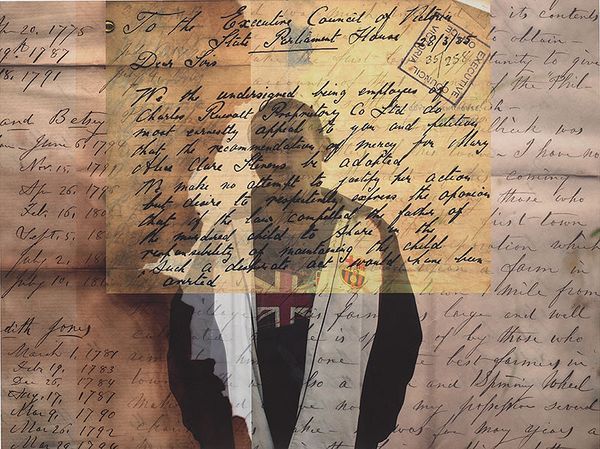
Mário Macilau, The Letter Story, 2016. New Now London.
Mário Macilau
Mário Macilau (b. 1984) lives and works in Maputo, Mozambique. Macilau started his journey as photographer in 2003 and went professional when he traded his mother's cell phone for his first camera in 2007. He specializes in long-term projects that focus on living and environmental conditions that affect socially isolated groups over time. Macilau’s work has been recognized with awards and featured regularly in numerous solo and group exhibitions both in his home country and abroad including The Pan African group exhibition during the Biennale of African Photography in Bamako in 2011, as well as a number of artistic residencies .
Discover More from New Now London >
Recommended Reading
